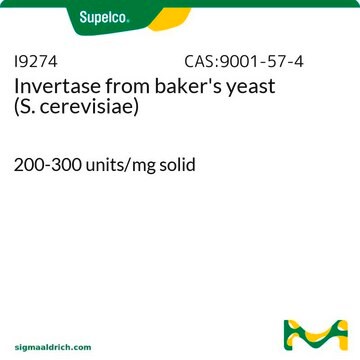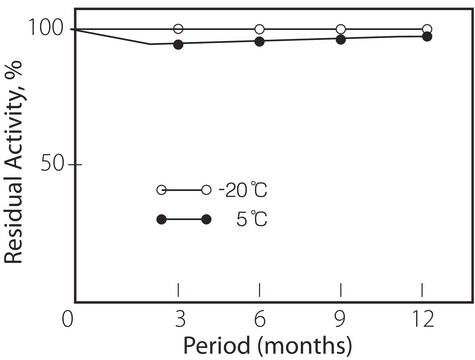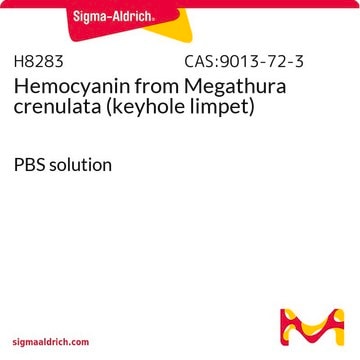I0408
Invertase Glycoprotein Standard
BioReagent, from Saccharomyces cerevisiae, for proteomics
Synonym(s):
Invertase from baker’s yeast (S. cerevisiae), β-D-Fructofuranosidase, β-D-Fructofuranoside fructohydrolase, Saccharase
About This Item
Recommended Products
biological source
Saccharomyces cerevisiae
Quality Level
grade
for proteomics
product line
BioReagent
form
lyophilized powder
mol wt
60 kDa
concentration
≥0.5 mg/vial protein (E1%/280)
storage temp.
2-8°C
Looking for similar products? Visit Product Comparison Guide
Application
- to generate N-linked glycan library
- as a negative control to study the binding of lectins to high mannose structures
- for sample pre-treatment in proteomic analyses to study drug-induced toxic epidermal necrolysis
Biochem/physiol Actions
Other Notes
signalword
Danger
hcodes
pcodes
Hazard Classifications
Resp. Sens. 1
Storage Class
10 - Combustible liquids
wgk_germany
WGK 3
ppe
Eyeshields, Gloves, type N95 (US)
Certificates of Analysis (COA)
Search for Certificates of Analysis (COA) by entering the products Lot/Batch Number. Lot and Batch Numbers can be found on a product’s label following the words ‘Lot’ or ‘Batch’.
Already Own This Product?
Find documentation for the products that you have recently purchased in the Document Library.
Customers Also Viewed
Our team of scientists has experience in all areas of research including Life Science, Material Science, Chemical Synthesis, Chromatography, Analytical and many others.
Contact Technical Service















